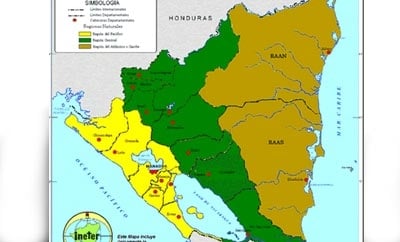A report from a Nicaraguan think-tank analyzing crime and violence in one of the semi-autonomous zones on Nicaragua’s Caribbean coast highlights the influence of the drug trade in the region, which helped bring about the country’s highest incidence of crime in 2011.
The Nicaragua-based Institute of Strategic Studies and Public Policy (IEEPP) released the report analyzing crime rates in the municipality of Bilwi, the main city of the North Atlantic Autonomous Region (RAAN), one of two semi-autonomous, mostly indigenous areas on the coast.
The RAAN as a whole had a murder rate of 18 per 100,000 in 2011, far below that of the neighboring South Atlantic Autonomous Region (RAAS), with 42.7. The study finds that the high rate in the RAAS was due in large part to the presence of local organized criminal groups — the RAAN also had organized crime, but most killing were due to personal disputes, rather than being carried out by hitmen. However, the IEEPP points out that killings in the RAAN were often driven by drugs, consumption of which has been rising due to international trafficking through the region.
InSight Crime Analysis
Nicaragua’s Caribbean coast has become an increasingly important route for cocaine being transported to the United States. An InSight Crime investigation last year highlighted the growth of crime and violence in the city of Bluefields, the capital of the RAAS, which is an emerging regional hub for the cocaine trade.
The IEEPP report found that Bilwi’s location on the main Caribbean drug route has made it an “obligatory step” for drug traffickers, who take advantage of its remoteness, and the network of rivers along the coastline. Other factors driving violence there are the predominantly young and urban population, high unemployment, and the existence of gangs and drug consumption.
The IEEPP report says that there has been more risk of sexual violence since drug traffickers have arrived, citing reports of cases of drug traffickers “purchasing” girls from indigenous communities for sums of up to $200.
The report says that street gangs, known as “pandillas” are responsible for some of the violence in the RAAN, although the study notes that it is hard to say how much, as this is not recorded in official figures. Gangs were, however, identified as the region’s biggest security threat in a December 2011 survey by IIEEPP, and there are thought to be 17 pandillas active in Bilwi.
Local people told the IEEPP that the gangs get guns from traffickers, and carry out operations for them. The gangs also produce their own, home-made weapons.

